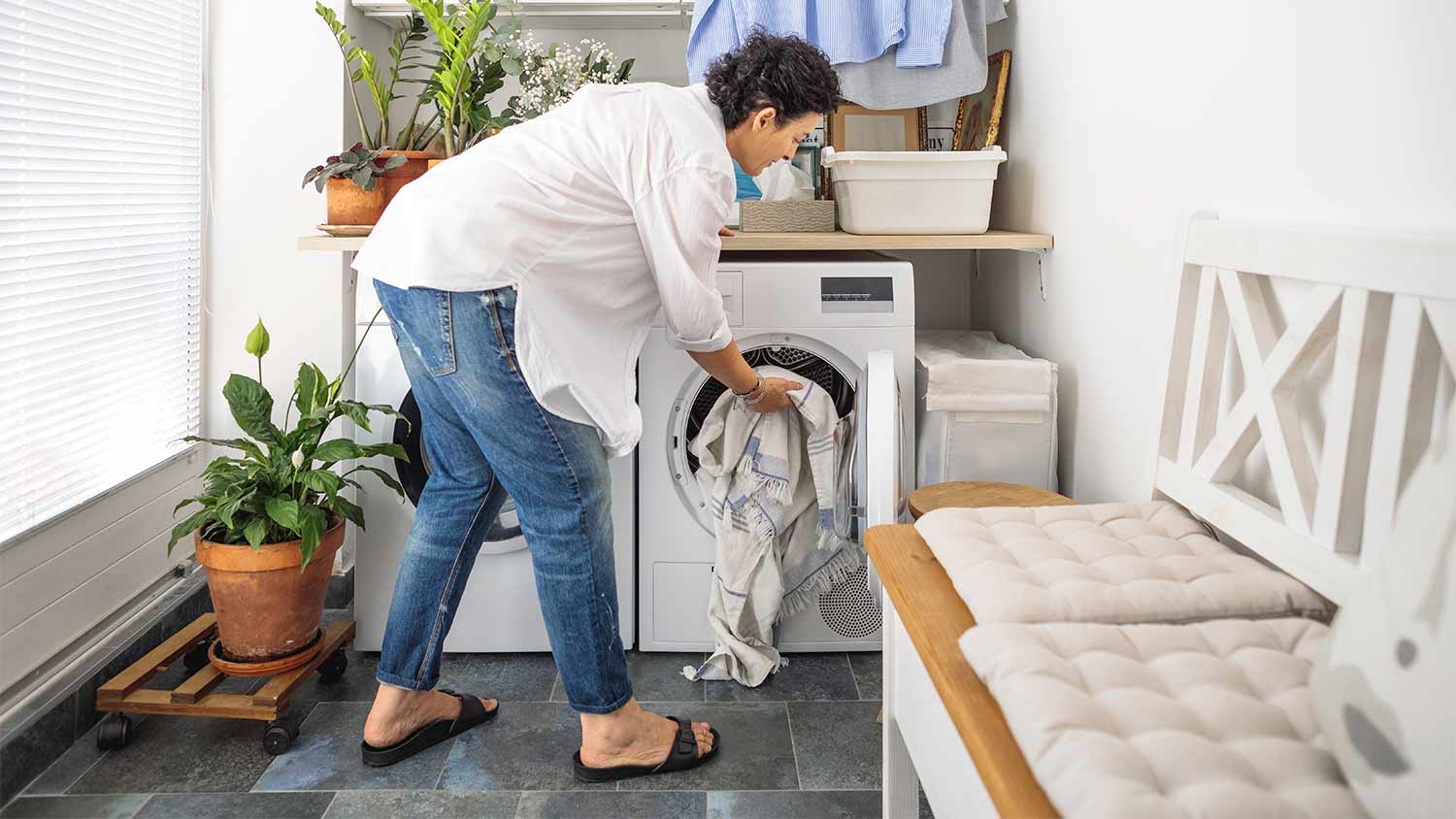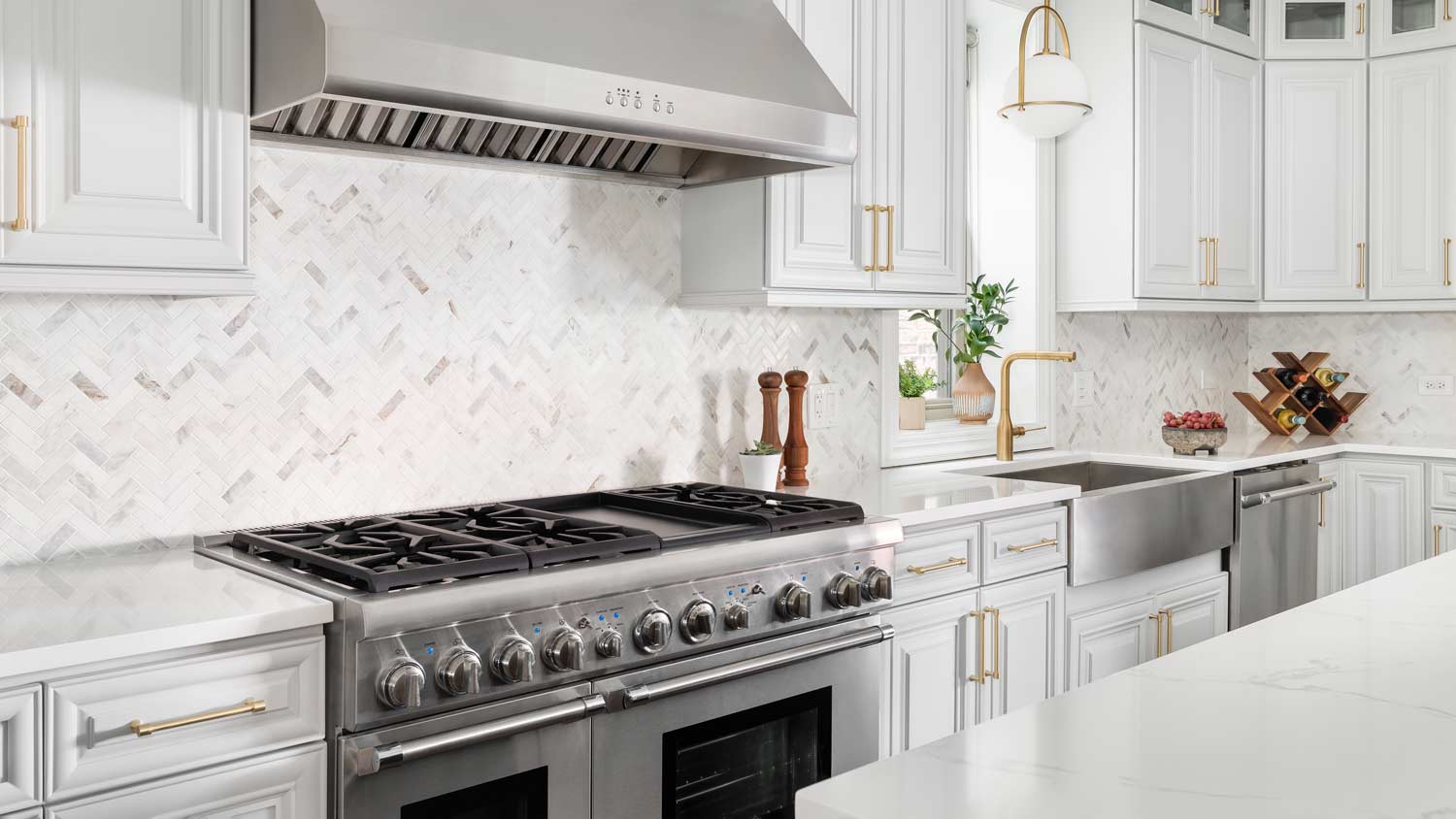How to Install or Replace a Dishwasher
Make kitchen cleanup a cinch by installing a brand-new dishwasher


- Adjustable wrench
- Drill and Bits
- Screwdriver
- Towel
- Appliance power cord
- Dishwasher connector kit
- Water supply line
- Wire connectors
After a delicious, home-cooked meal, who wants to face a pile of dirty dishes? Luckily, a dishwasher can do the hard work for you. If it's time to upgrade an older appliance, or you've moved into a home without one, knowing how to install a dishwasher comes in handy. This guide will walk you through the process.
Prepping to Install a Dishwasher

When preparing to do a dishwasher installation, turn off the water supply valve (or the main water valve in your home) and turn off power to the dishwasher at your circuit breaker. Most models get hooked up to the hot water supply line, although some types of dishwashers can be connected to the cold water supply, because they have heating elements that bring the water to the right temperature.
Although your dishwasher will come with most of the parts you need, there are a couple of items you’ll need to buy. Check your owner’s manual to see if you can purchase universal parts or if you need to get model-specific parts.
The first item you’ll need is a water supply line. It’s best to purchase a stainless steel, braided supply line rather than a cheaper, plastic version to prevent leaks. Look for a supply line labeled for dishwashers. If you’re replacing a dishwasher, purchase a new supply line rather than reusing the old one.
Secondly, you’ll likely need to purchase a power cord. Look for an appliance power cord so it’ll be the right gauge. The only instance when you won’t need a power cord is if you plan to hardwire it from the house.
Before getting started, know that installing a dishwasher involves some plumbing knowledge and might take some electrical work (like hooking up a dishwasher to a power cord). Never attempt to do this on your own without the proper knowledge and training. When in doubt, leave this one to the pros.
Once you’ve finished the preparation steps, you’re ready to install the new dishwasher. Read the manufacturer’s manual for the most precise installation information.
To access the bottom of the dishwasher to complete the following steps, lay the dishwasher down on its back. Use cardboard or a towel on the ground to prevent scratches to your flooring.
Many appliance projects, whether it’s installing, repairing, or cleaning, will involve moving heavy objects. In order to avoid injury, homeowners should always get assistance from at least one other person when moving an appliance.
If you haven’t yet, turn off the water and power to the dishwasher.
Remove the Old Dishwasher (if Applicable)
After you turn off the water and electricity to the dishwasher, close the valve and unplug the power supply. Then, unscrew the dishwasher from the brackets on the underside of the counter. You may also need to remove the kicker plate at the bottom of the dishwasher and loosen the feet.
Next, disconnect the water supply line, and use a bowl to catch any excess water. Then, unhook the drain line, which runs from the dishwasher to the underside of the sink. Simply loosen the clamp to remove it.
Gently lift the dishwasher and pull it out of the cabinet. You'll want to find out what to do with old appliances in your area. You may need to schedule a special curbside trash pickup if you’re throwing it away or bring the dishwasher to a recycling or scrap center.
Attach the Water Supply Line, Drain Hose, and Power Cord to the Dishwasher
For the water supply line, you may need to install an adapter elbow, which you should prep with plumber’s tape for a watertight seal. Screw the adapter in until it’s facing the back of the dishwasher, and then install the water supply line. This connection is a compression fitting with a rubber gasket, so avoid over tightening. Note that there’s a track for the supply line on the bottom of the dishwasher.
Next, take your drain hose and connect it to the dishwasher pump by tightening the clamp. There’s a second track for the drain hose.
Connect the power cord to the dishwasher so the appliance can turn on. In some cases, all you'll need to do is plug the cord into the outlet under the sink.
Some dishwashers are slightly more complicated, though, and require you to connect the power cords to a junction box on the appliance. In this case, your power cord may consist of two gray cords and one green cord, or one white, one black, and one green cord.
If there are two gray cords, the smooth one is the hot wire, while the ribbed one is neutral. If you have black and white cords, the black cord is the hot wire, while the white is neutral. The green cord is the grounding wire. Attach the wires from the dishwasher to the corresponding wires on the power cord, secure them with a wire nut, tighten them, and replace the cover on the junction box.
Push the Dishwasher Into Place
 Photo: rois010 / Adobe Stock
Photo: rois010 / Adobe StockAdjust the feet of the dishwasher so that it is perfectly level and aligned with the cabinet. You should have about one-eighth inch of space all around the dishware. When the dishwasher is level, push it into the cabinet, then install screws in the brackets to hold it in place.
Mount the Dishwasher
 Photo: Lazy_Bear / Adobe Stock
Photo: Lazy_Bear / Adobe StockLift the dishwasher into the upright position. Screw in the mounting pads on the top of the dishwasher. Then, secure the brackets on the underside of the counter.
Hook Up the Water Supply Line, Drain Hose, and Power Under the Sink
Hook up the water supply line to the hot water shut-off valve, and then connect the drain hose. This process differs depending on if you have a garbage disposal. If you have one, remove the knockout plug part of the garbage disposal before installing the drain hose. Otherwise, attach the drain hose to the dishwasher's tailpiece.
Check the Water Supply Line for Leaks
Turn on the water at the source, and open the water valve. Check all of the connections carefully for any leaks.
Run a Test Cycle
Plug in the power cord, start the dishwasher, and run its first cycle. Again, make sure there are no leaks. Using a flashlight to look under the dishwasher and in the cabinet for any stray water is easiest. In addition to checking for leaks, ensure the dishwasher is draining properly.
DIY vs. Hiring a Pro to Install a Dishwasher
Most homeowners are capable of replacing a dishwasher, unless the new unit requires unforeseen electrical or plumbing work, in which case homeowners should strongly consider hiring a local dishwasher installation pro.
On average, you can expect to pay $970 for a dishwasher installation, but the unit price can range between $370 and $3,500. Depending on your setup, you may need to budget for additional work, such as:
Removing the old unit: $120–$150
Cost of installing an electrical outlet: $130–$290
Cost of installing plumbing pipes: $600–$1,600 per fixture
Properly installing your dishwasher is important because bad plumbing work will inevitably lead to water leaks. While cleaning up a leak or two might not seem like a big deal, constant leaks can lead to major water damage to your cabinetry, floors, and walls. Fixing that damage will likely be a much bigger hit to your wallet than hiring a pro to do it right the first time.
Kate Fann contributed to this piece.
On average, your dishwasher should last around 10 years, although it can last 16 years or more with proper usage and maintenance.
You can call your trash company to see if they offer curbside pickup of old appliances. You can also call a local junk removal service or rent a dumpster if you expect to have a lot of trash to dispose of. On the other hand, if your old dishwasher is still in decent working shape, consider donating it or reselling it on a local marketplace.
Installing a dishwasher should take one to four hours, depending on the complexity of the installation and whether you DIY or hire a pro. Even if you're particularly handy, installing a dishwasher on your own will likely take longer — at least two hours. On the other hand, a professional can likely install a dishwasher in about an hour.
Installation time will take longer if you have to remove an existing dishwasher, reroute plumbing, or repair damaged flooring underneath the appliance.





- Appliance Repair Companies
- Washing Machine Repair
- Dryer Repair
- Refrigerator Repair
- Dishwasher Repair
- Oven Repair
- Wood & Pellet Stove Repair
- Freezer Repair Services
- Wood Stove Services
- Gas Stove Repair
- Emergency Appliance Repair Companies
- Ice Maker Repair
- Gas Appliance Repair
- GE Appliance Repair
- GE Refrigerator Repair
- GE Dryer Repair
- GE Dishwasher Repair
- GE Washing Machine Repair
- Samsung Appliance Repair
- Samsung Refrigerator Repair
- Samsung Dryer Repair
- Samsung Washer Repair
- Samsung Dishwasher Repair
- Samsung Oven Repair
- Whirlpool Repair
- Whirlpool Refrigerator Repair
- Whirlpool Washer Repair
- Whirlpool Dryer Repair
- Whirlpool Oven Repair
- Maytag Appliance Repair
- Maytag Refrigerator Repair
- Maytag Washer Repair
- Maytag Dryer Repair
- Maytag Dishwasher Repair
- Kitchenaid Appliance Repair
- Kitchenaid Oven Repair
- Kitchenaid Refrigerator Repair
- Kenmore Appliance Repair
- Kenmore Dishwasher Repair
- Kenmore Washer Repair
- Kenmore Dryer Repair
- LG Refrigerator Repair
- Bosch Appliance Repair
- Kenmore Refrigerator Repair
- LG Appliance Repair Services
- GE Microwave Repair
- Electrolux Appliance Repair
- Electrolux Washer Repair
- Kitchenaid Dishwasher Repair Services
- Wood Stove Inspection
- Dishwasher Installation
- Trash Compactor Repair











